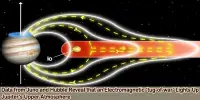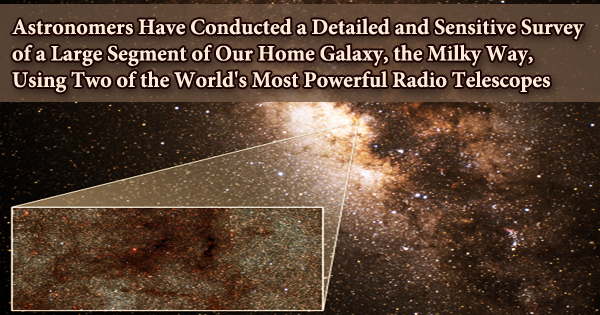Neptune is our solar system’s eighth planet from the sun. An exoplanet smaller than Neptune with its own atmosphere has been discovered by an international team of scientists in the Neptunian Desert around its star, with the University of Warwick playing a key role.
According to NASA, this blue gas giant has more than 17 times the mass of Earth and about 58 times the volume of Earth. A slushy fluid combination of water, ammonia, and methane ice surround Neptune’s rocky core.
The rogue planet was discovered in a new study conducted by Dr. Richard West and involving Professor Peter Wheatley, Dr. Daniel Bayliss, and Dr. James McCormac from the University of Warwick’s Astronomy and Astrophysics Group.
Because its greater mass produces more gravitational compression of its atmosphere, Neptune is denser and physically smaller than Uranus. It is one of the two ice giant planets in the solar system (the other one being its near-twin Uranus).
Astronomer Galileo Galilei was one of the first to recognize Neptune as a space object, although he mistook it for a star because of its sluggish motion. The planet orbits the Sun once every 164.8 years at an average distance of 30.1 AU (4.5 billion km; 2.8 billion mi).
This planet must be tough it is right in the zone where we expected Neptune-sized planets could not survive. It is truly remarkable that we found a transiting planet via a star dimming by less than 0.2% this has never been done before by telescopes on the ground, and it was great to find after working on this project for a year.
Dr. Richard West
NGTS is located in the center of the Atacama Desert, Chile, at the European Southern Observatory’s Paranal Observatory. It is a partnership involving Warwick, Leicester, Cambridge, and Queen’s University Belfast in the United Kingdom, as well as the Observatoire de Genève, DLR Berlin, and the Universidad de Chile.
Researchers have dubbed NGTS-4b “The Forbidden Planet” since it is smaller than Neptune yet three times the size of Earth.
It has a mass of 20 Earth masses, a radius of 20% that of Neptune, and a temperature of 1000 degrees Celsius. It takes only 1.3 days to orbit the star, which is less than Earth’s year-long orbit around the sun.
It is the first of its kind to be discovered in the Neptunian Desert. Neptune is fascinating since it is a planet in our own solar system, and astronomers want to learn more about it to help with exoplanet research.
Astronomers are particularly interested in learning about the habitability of worlds larger than Earth. The planet’s blue hue is due in part to traces of methane in its outermost regions, while an unknown component is thought to give Neptune a deeper blue hue than Uranus.
The Neptunian Desert is an area near stars where no planets the size of Neptune have been discovered. Because this region receives significant irradiation from the star, the planets’ gaseous atmospheres evaporate, leaving just a rocky core. NGTS-4b, on the other hand, retains its gaseous atmosphere.
Astronomers seeking for new planets look for a dip in a star’s light, which indicates a planet orbiting it and blocking the light. Ground-based searches often detect drops of 1% or more, whereas the NGTS telescopes can detect dips as small as 0.2%.
The planet may have recently relocated into the Neptunian Desert, or it was once quite large and the atmosphere is currently draining, according to researchers. Neptune, like Earth, has a rocky core, but its atmosphere is far thicker, making life as we know it impossible.
Astronomers are still attempting to figure out when a planet becomes huge enough to gather up a lot of gas from the surrounding environment, making life difficult or impossible to exist. Neptune’s outer atmosphere is one of the coldest areas in the Solar System, with temperatures nearing 55 K (−218 °C; −361 °F) at its cloud tops due to its immense distance from the Sun. At the planet’s core, temperatures are around 5,400 K (5,100 °C; 9,300 °F).
Dr. Richard West, from the Department of Physics at the University of Warwick comments:
“This planet must be tough it is right in the zone where we expected Neptune-sized planets could not survive. It is truly remarkable that we found a transiting planet via a star dimming by less than 0.2% this has never been done before by telescopes on the ground, and it was great to find after working on this project for a year.”
“We are now scouring out data to see if we can see any more planets in the Neptune Desert perhaps the desert is greener than was once thought.”
















